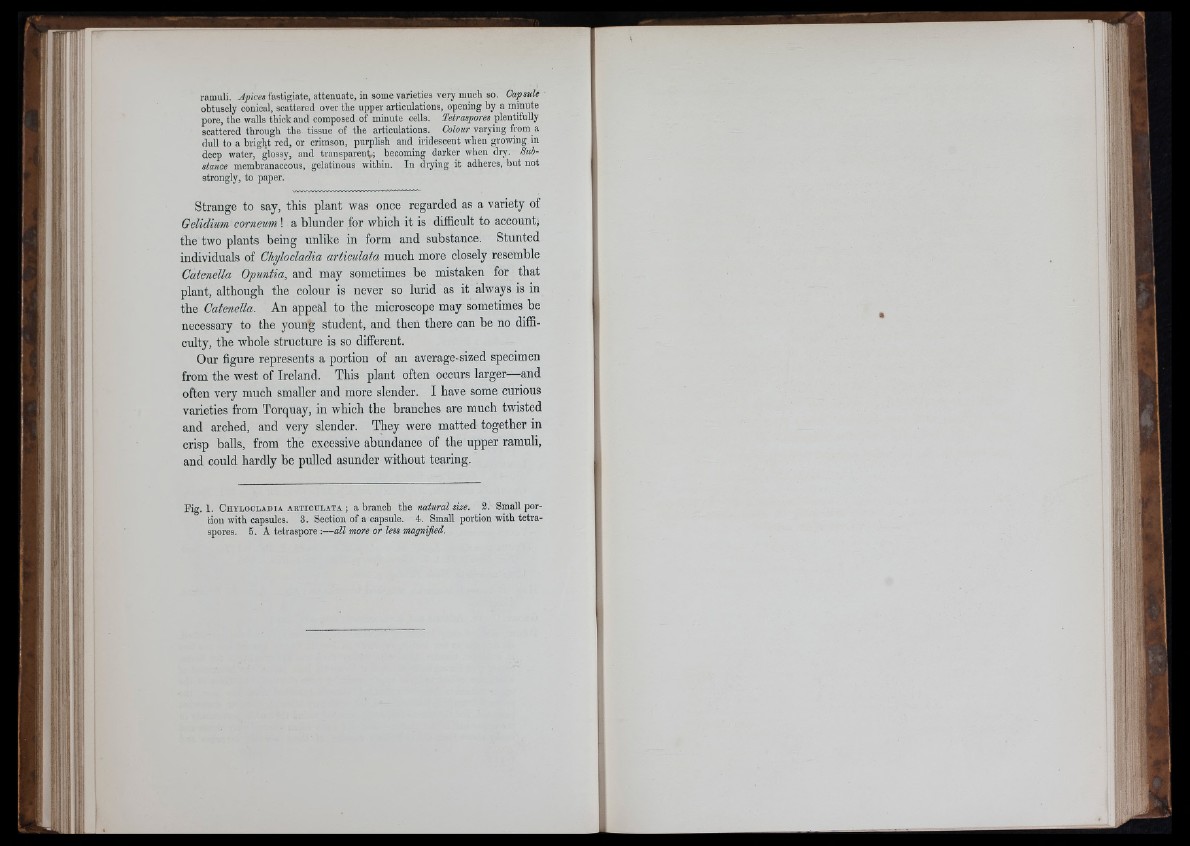
rnmuli. Apices fastigiate, attenuate, in some varieties very much so. Capsule
obtusely conical, scattered over the upper articulations, opening by a minute
pore, the walls thick and composed of minute cells. Tetraspores plentifully
scattered through the tissue of the articulations. Coi«« varying from a
dull to a bright red, or crimson, purplish and iridescent when growing in
deep water, glossy, and transparent; becoming darker when dry. Substance
membranaceous, gelatinous within. In drying it adheres, but not
strongly, to paper.
Strange to say, this plant was once regarded as a variety of
Gelidium corneum ! a blunder for which it is difficult to account,
the two plants being unlike in form and substance. Stunted
individuals of Chylocladia articulata much more closely resemble
Catenella Opuntia, and may sometimes be mistaken for that
plant, although the colour is never so lurid as it always is in
the Catenella. An appeal to the microscope may sometimes be
necessary to the young student, and then there can be no difficulty,
the whole structure is so different.
Our figure represents a portion of an average-sized specimen
from the west of Ireland. This plant often occurs larger—and
often very much smaller and more slender. I have some curious
varieties from Torquay, in which the branches are much twisted
and arched, and very slender. They were matted together in
crisp balls, from the excessive abundance of the upper ramuli,
and could hardly be pulled asunder without tearing.
Fig. 1. C h y l o c l a d ia a k t io u l a t a ; a branch the natural size. 3. Small por-
biou with capsules. 3. Section of a capsule. 4. Small portion with tetraspores,
5. A tetraspore :—all more or less magnijkd.